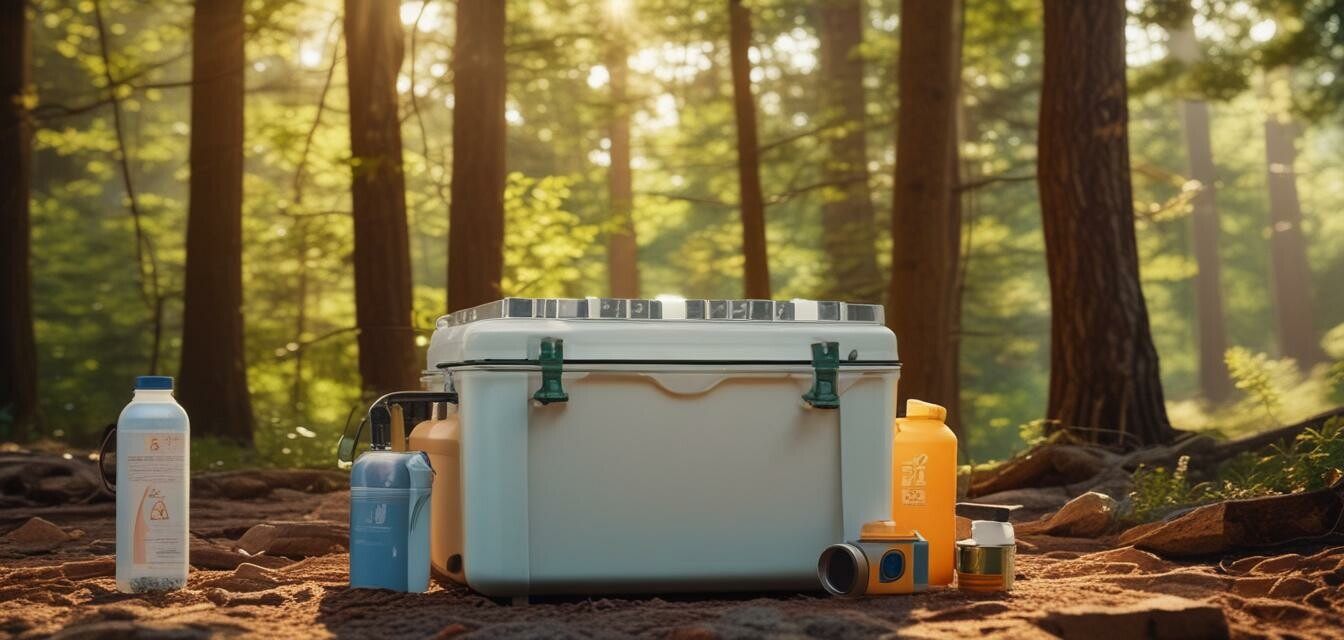
Best Practices for Selecting Solar-Powered Coolers
Key Takeaways
- Solar-powered coolers are an eco-friendly option for camping enthusiasts.
- Consider factors like size, weight, energy efficiency, and insulation.
- Investing in a cooler with a quality solar panel can enhance your camping experience.
- Look for models with additional features such as USB outlets and durable materials.
- Research different brands and models to ensure the best fit for your needs.
Camping is an exciting adventure that connects you with nature. However, keeping your food and drinks fresh can be a challenge. This is where solar-powered coolers come in. These innovative devices utilize solar energy, ensuring you have a reliable way to keep your provisions cool while enjoying the great outdoors. In this guide, we will explore the best practices for selecting solar-powered coolers that suit your needs.
Understanding Solar-Powered Coolers
Solar-powered coolers are designed to operate using the power generated from sunlight. They are perfect for camping trips, picnics, or any situation where a regular cooler might not suffice. Unlike traditional coolers that rely on ice, these coolers are equipped with solar panels that power cooling mechanisms/
Benefits of Using Solar-Powered Coolers
- Eco-friendly: Harnessing solar energy reduces your carbon footprint.
- No need for ice: Eliminate the hassle and mess of melting ice.
- Unlimited power: As long as the sun shines, you have power to keep things cool.
- Versatile use: Great for camping, road trips, or outdoor events.
Key Factors to Consider When Selecting a Solar-Powered Cooler
1. Size and Capacity
The first thing to consider is how much food and drink you need to keep cool. Solar-powered coolers come in various sizes, so assess your needs beforehand:
| Size | Capacity (Liters) | Best For |
|---|---|---|
| Small | 20-30 | 1-2 people for a weekend trip |
| Medium | 30-50 | Family outings or short camping trips |
| Large | 50+ | Extended camping trips or large groups |
2. Energy Efficiency
When selecting a solar-powered cooler, energy efficiency is crucial. Look for models that provide:
- High-efficiency solar panels
- Low power consumption
- Battery storage options for cloudy days
3. Insulation Quality
Good insulation is vital to maintain low temperatures inside the cooler. High-quality models often feature:
- Thick walls to reduce heat gain
- Effective sealing to prevent cold air from escaping
4. Durability
Ensure your cooler can withstand outdoor conditions. Look for features such as:
- Waterproof and weather-resistant materials
- Strong handles for easy transport
- Robust build to endure rough treatment
5. Additional Features
Some solar-powered coolers come with extra features that enhance convenience:
- USB outlets for charging devices
- Integrated Bluetooth speakers for entertainment
- Multiple compartments for organization
Comparing Popular Brands
| Brand | Energy Efficiency | Durability | Warranty |
|---|---|---|---|
| Brand A | High | Excellent | 2 years |
| Brand B | Medium | Good | 1 year |
| Brand C | High | Very Good | 3 years |
Final Thoughts on Selecting the Right Solar-Powered Cooler
Choosing the right solar-powered cooler can elevate your camping experience. It's essential to consider your specific needs, such as capacity and additional features, to find the perfect fit. Explore various options and read buying guides to compare products before making a decision.
Explore More about Solar-Powered Gear
Don't stop at just choosing a cooler! Enhance your camping setup with the right equipment:
- Portable solar panels for additional energy needs.
- Solar camping tents for energy-efficient shelter.
- Solar lanterns & lights to brighten up your nights.
- Solar cookers & grills for eco-friendly cooking.
Pros
- Environmentally friendly energy source
- No ice required
- Versatile usage for various outdoor activities
- Many models offer additional features for convenience
Cons
- Higher initial cost compared to traditional coolers
- Dependent on sunlight for optimal performance
- May require maintenance for solar panels